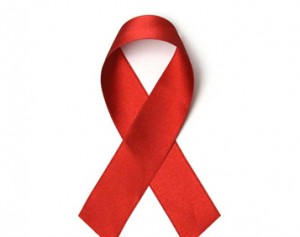UN report shows Ghana achieved most of MDGs including reduction in HIV prevalence
 A report by the United Nations in Ghana shows that the country has met most of the Millennium Development Goals (MDGs), with the UN spending some $137 million on programmes in Ghana.
A report by the United Nations in Ghana shows that the country has met most of the Millennium Development Goals (MDGs), with the UN spending some $137 million on programmes in Ghana.
The Annual Report of the UN in Ghana for the year 2014-2015 says the country, which was the first in sub-Sahara Africa to meet the MDG to cut extreme poverty by half, also made substantive progress in reducing HIV prevalence.
The country, the report said, also increased access to clean water and increased access to basic education equally for boys and girls.
The MDGs, which ended after 15 years in 2015, were set to reduce extreme poverty, hunger, disease, environmental degradation and gender inequality in the world. They have since been replaced the Sustainable Development Goals (SDGs).
The UN and its member countries in August 2015 agreed on the Agenda 2030 – these are 17 SDGs and 169 targets.
The SDGs, seek to build on the MDGs and complete what they did not achieve. They seek to realize the human rights of all and to achieve gender equality and the empowerment of all women and girls. They are integrated and indivisible and balance the three dimensions of sustainable development: the economic, social and environmental. The Goals and targets will stimulate action over the next 15 years in areas of critical importance for humanity and the planet, the UN says.
According to the report the successes achieved by Ghana, this will provide a solid foundation for continued progress in eliminating poverty in all its forms.
It however, noted some shortfalls. The report notes however that, sustainable progress towards the goals on maternal mortality, sanitation, nutrition, women’s involvement in decision-making, decent work and the environment fell short of national expectation, the progress achieved, the lessons learned, and the partnerships forged, however, it posits, well position Ghana to accelerate achievements in these areas under the Agenda 2030.
The report also said, Ghana has halted the rise in prevalence and is on track to reverse the spread of HIV/AIDS. The national HIV/AIDS prevalence fell from 3.6 per cent in 2007 to 1.3 per cent by 2013 but regional disparities persist. The Eastern Region has the highest prevalence of 3.7 per cent; and the Northern Region has the lowest rate of 0.8 per cent.
It noted that efforts to broaden access to antiretroviral therapy (ART) have yielded considerable improvements in the number of people living with HIV (PLHIV) on treatment.
According to report, the prevalence of HIV among pregnant women tested at the antenatal clinic is 1.6 per cent for 2014.
In the years preceding 2008, the report notes, prevalence varied from a high of 2.6 per cent in 2007 to a low of 1.5 per cent in 2005.
However, results from the 2014 Ghana Demographic and Health Survey (GDHS) show that, while knowledge of HIV awareness is universal, HIV prevention measures is much lower. 70 per cent of women and 82 per cent of men know that the risk of getting HIV can be reduced by using condoms and limiting sex to one faithful, uninfected partner.
It also indicates that 78 per cent of women and 76 per cent of men know that HIV can be transferred by breastfeeding. However, fewer women (64 per cent) and men (61 per cent know that the risk of mother-to-child transmission can be reduced by taking drugs.
The report further notes that, UN support during 2014-2015 has been a key part of Ghana’s success in combating HIV transmission and mitigating its impact through the strengthening of the multi-sectoral and decentralized character of the national response.
Also, a number of activities were implemented to help mitigate some of the iniquities in HIV/AIDS prevention and control, it added.
According to the report, the UN spent an amount of $3,310,380 on HIV/AIDS programme implementation out of the sum of $136,876,815 spent on all programmes for the year 2014-2015.
The report reiterates Ghana’s cut in poverty since the World Bank Group last year reported on strong economic growth in Ghana within the past two decades which helped cut the poverty rate in half, from 52.6 per cent to 21.4 per cent between 1991 and 2012.
The World Bank report also said, Ghana’s poverty rate in 2012 was less than half the African average of 43 per cent and extreme poverty also declined from 37.6 per cent in 1991, to 9.6 per cent in 2013. This was documented in a book titled “Poverty Reduction in Ghana: Progress and Challenges.”
In relation to education, there has been a notable expansion of access to basic education.
According to Education Monitoring Information System (EMIS), enrolment figures (2014-2015), Ghana has made significant progress in increasing access to basic education (Kindergarten/KG, Primary and Junior High School/JHS) since 2000 due to enabling policy environment such as the school feeding programme, the capitation grant and free school uniforms.
The UN spent $18,237,319 on implementing educational programmes for the year under review.
Ghana’s progress with regards to access to clean water is quite remarkable, according to the report. It indicates that Ghana was declared guinea-worm free, a significant achievement reflecting a decade of targeted work and investment. Also the 2014 GDHS suggests that there has been a continued increase in access to improved drinking water, underpinned by a significant increase in sachet water consumption.
An amount of $11,706,210 was spent in the implementation of water and sanitation programmes for the year 2014-2015.
By Pamela Ofori-Boateng
Copyright © 2016 by Creative Imaginations Publicity
All rights reserved. This news item or any portion thereof may not be reproduced or used in any manner whatsoever without the express written permission of the publisher except for the use of brief quotations in reviews.
